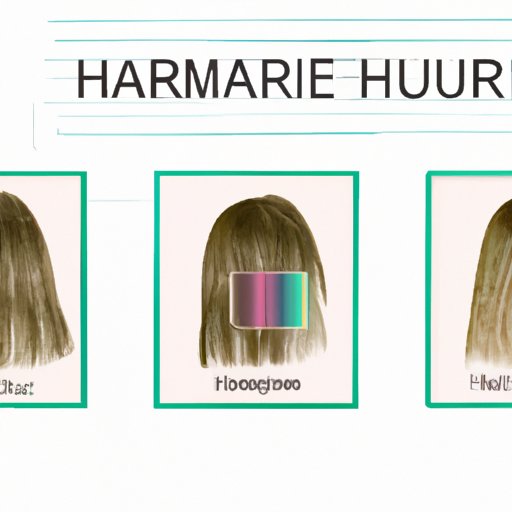
Introduction
Welcome to this beginner’s guide on how to do highlights at home. Highlights add dimension and light to your hair without the commitment of going full-on blonde or making drastic changes to your natural hair color. Doing highlights at home is a great option for those who want to save time and money. This article will provide you with a step-by-step guide on how to do highlights at home, including tips on which products to choose and how to choose the right shade for your hair type and style.
Start with a Basic Understanding of Hair Highlights
Hair highlights involve lightening strands of hair to create a multi-dimensional look. Unlike ombre or balayage techniques, which create a gradient effect from dark to light, highlights are lighter pieces of hair placed throughout your hair to add dimension. Highlights can be a good choice for certain hair types or styles because they add depth and dimension.
Identify the Best Products for Highlighting at Home
Before you get started, make sure you have key products on hand. You’ll need a hair color kit, a few different sized brushes, and combs. When choosing a hair color kit, make sure to choose one with a highlighting formula that is designed to work with the color of your hair. Choose brushes and combs that allow you to section your hair easily and apply the color evenly.
Choose Your Highlighting Technique
There are a few different techniques you can choose from when highlighting your hair. One technique is to use a cap and hook: using a cap and hook involves placing a cap on your head with small holes, pulling strands of hair through the holes with a hook, and then applying the color to those strands. A second technique is to use foil: using foil involves sectioning your hair, placing small pieces of foil under the sections you want to highlight, and then applying the color to the strands on top of the foil. A third technique is to use a hair painting brush: using a hair painting brush involves painting the color directly onto the chosen strands. Regardless of the technique, make sure you are prepared before you begin the process.
Consider Your Hair Type
Different hair types require different approaches for highlighting. For those with curly hair, it’s best to use the foil technique because it allows for more precise placement of the color. For those with thin hair, it’s best to choose a lighter color and focus on the top layers of the hair to create the illusion of thickness. For those with thick hair, it’s best to start with a heavier application of color and then apply more as needed to achieve the desired effect.
Set Realistic Expectations
When choosing a shade, it’s important to choose one that will work best with your natural hair color. Going too light too quickly can result in damage to your hair. Be sure to set a realistic timeline for how long the process will take and remember that mistakes can happen. There are ways to correct mistakes and improve the final results if needed.
Know What to Do If You Make a Mistake
If you make a mistake, it’s important to remember that it’s usually possible to correct or improve the mistake. If you apply too much color, you can use a clarifying shampoo to remove some of the color. If you have uneven highlighting, you can go back and add more color or adjust the placement of the highlight strands. Don’t stress if a mistake happens, you can always work to fix it.
Finish with Aftercare
Aftercare is essential for keeping your highlights looking fresh. Choose shampoos and conditioners that are specifically designed for color-treated hair. You should also touch up or reapply highlights as necessary, but be sure to wait at least six weeks between treatments to avoid damage or breakage. Keep your hair healthy and fresh with a proper hair care routine.
Conclusion
In this article, we’ve gone over the basics on how to do highlights at home, including the best products to use, the different techniques to try, and tips for different hair types. Remember to start with a basic understanding of highlights, choose the right products, select a technique that works for you, set realistic expectations, know what to do if you make a mistake, and finish with proper aftercare. By following these tips, you can achieve salon-quality results from the comfort of your own home.





